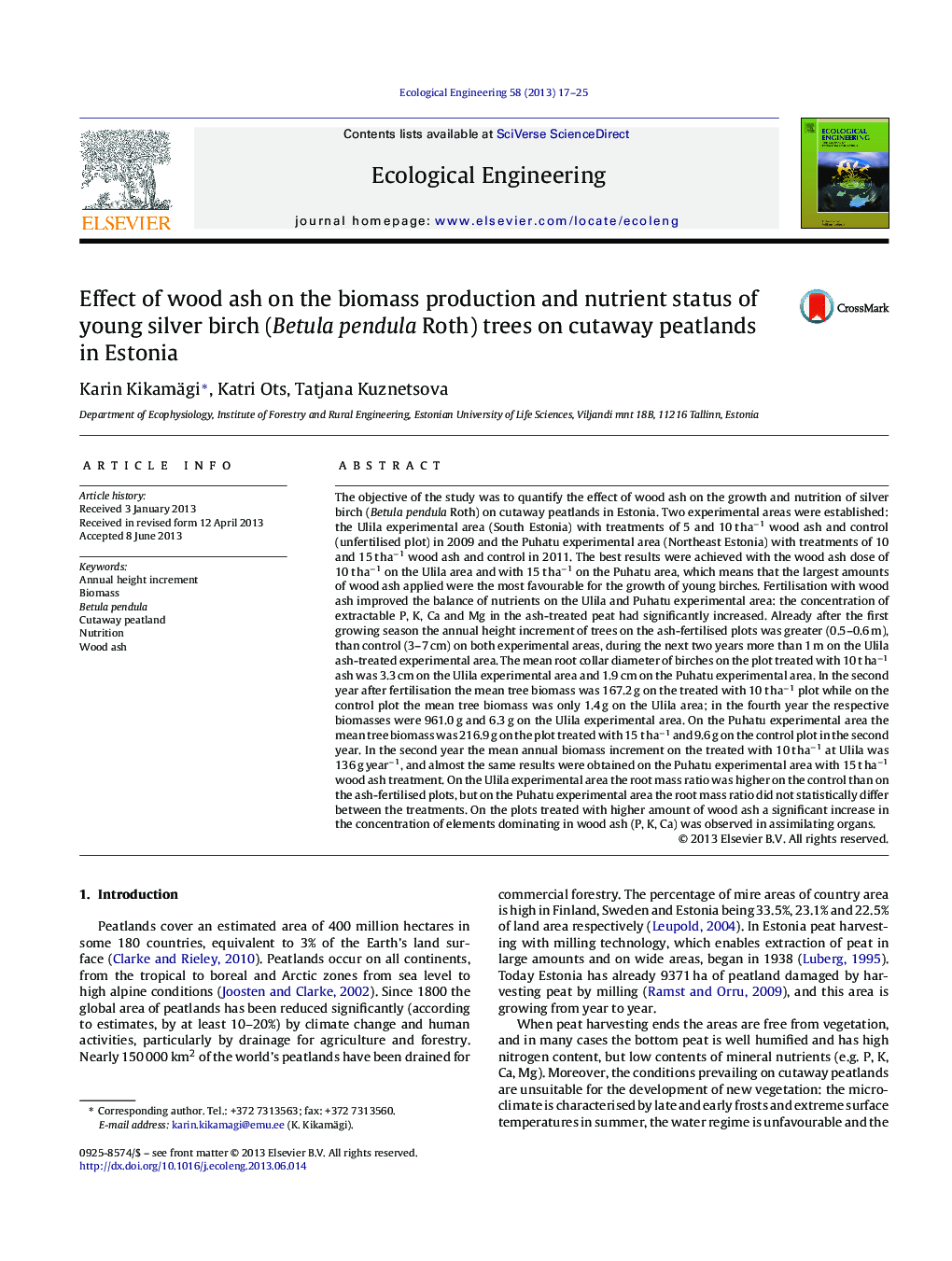| Article ID | Journal | Published Year | Pages | File Type |
|---|---|---|---|---|
| 6302467 | Ecological Engineering | 2013 | 9 Pages |
Abstract
The objective of the study was to quantify the effect of wood ash on the growth and nutrition of silver birch (Betula pendula Roth) on cutaway peatlands in Estonia. Two experimental areas were established: the Ulila experimental area (South Estonia) with treatments of 5 and 10 t haâ1 wood ash and control (unfertilised plot) in 2009 and the Puhatu experimental area (Northeast Estonia) with treatments of 10 and 15 t haâ1 wood ash and control in 2011. The best results were achieved with the wood ash dose of 10 t haâ1 on the Ulila area and with 15 t haâ1 on the Puhatu area, which means that the largest amounts of wood ash applied were the most favourable for the growth of young birches. Fertilisation with wood ash improved the balance of nutrients on the Ulila and Puhatu experimental area: the concentration of extractable P, K, Ca and Mg in the ash-treated peat had significantly increased. Already after the first growing season the annual height increment of trees on the ash-fertilised plots was greater (0.5-0.6 m), than control (3-7 cm) on both experimental areas, during the next two years more than 1 m on the Ulila ash-treated experimental area. The mean root collar diameter of birches on the plot treated with 10 t haâ1 ash was 3.3 cm on the Ulila experimental area and 1.9 cm on the Puhatu experimental area. In the second year after fertilisation the mean tree biomass was 167.2 g on the treated with 10 t haâ1 plot while on the control plot the mean tree biomass was only 1.4 g on the Ulila area; in the fourth year the respective biomasses were 961.0 g and 6.3 g on the Ulila experimental area. On the Puhatu experimental area the mean tree biomass was 216.9 g on the plot treated with 15 t haâ1 and 9.6 g on the control plot in the second year. In the second year the mean annual biomass increment on the treated with 10 t haâ1 at Ulila was 136 g yearâ1, and almost the same results were obtained on the Puhatu experimental area with 15 t haâ1 wood ash treatment. On the Ulila experimental area the root mass ratio was higher on the control than on the ash-fertilised plots, but on the Puhatu experimental area the root mass ratio did not statistically differ between the treatments. On the plots treated with higher amount of wood ash a significant increase in the concentration of elements dominating in wood ash (P, K, Ca) was observed in assimilating organs.
Related Topics
Life Sciences
Agricultural and Biological Sciences
Ecology, Evolution, Behavior and Systematics
Authors
Karin Kikamägi, Katri Ots, Tatjana Kuznetsova,
